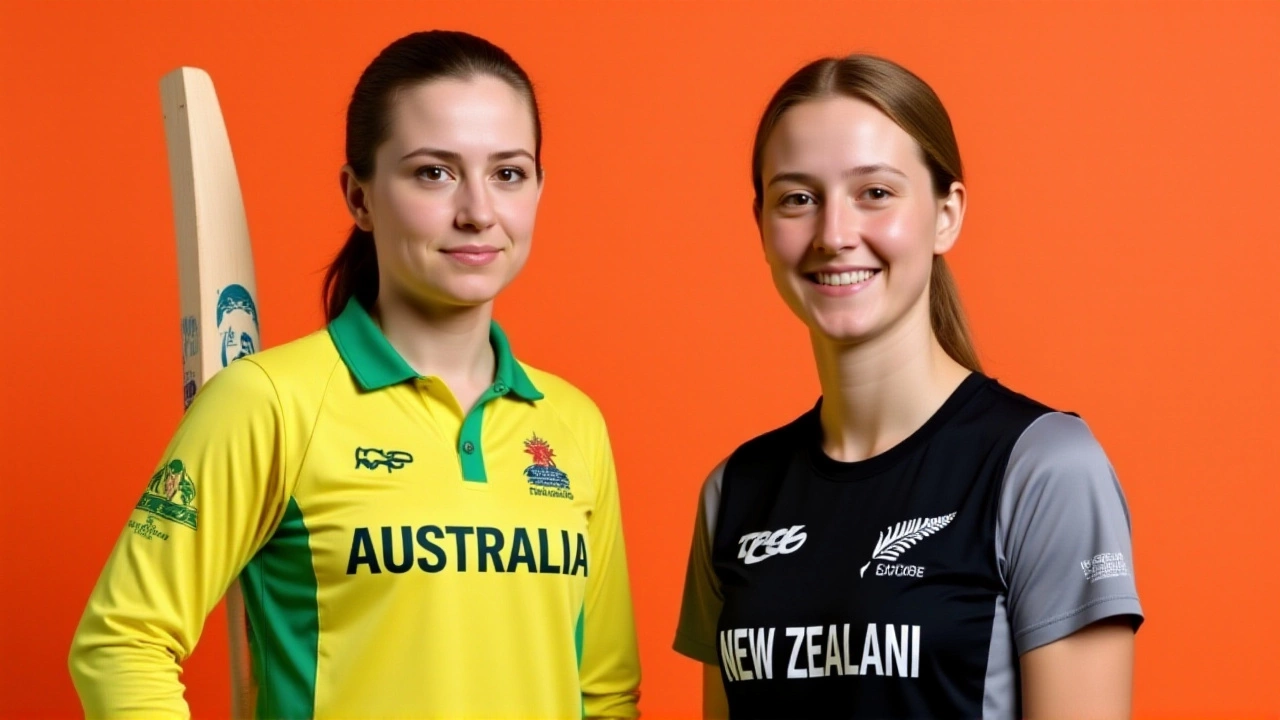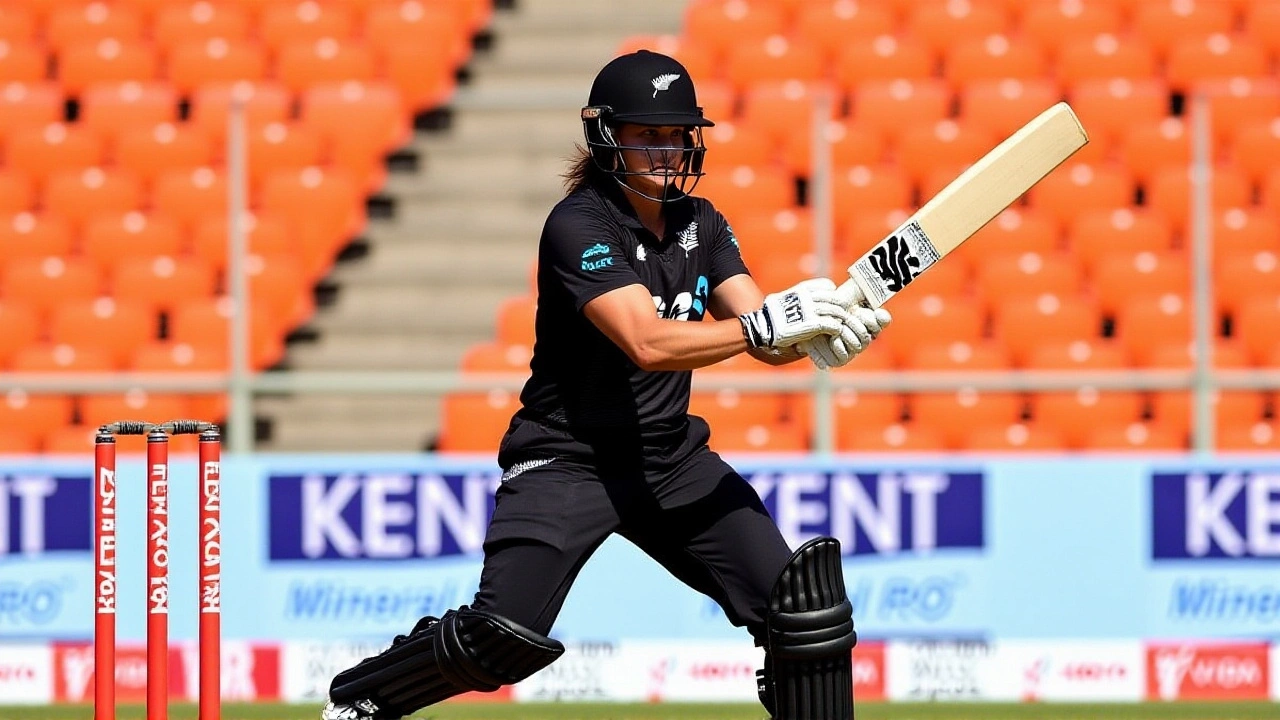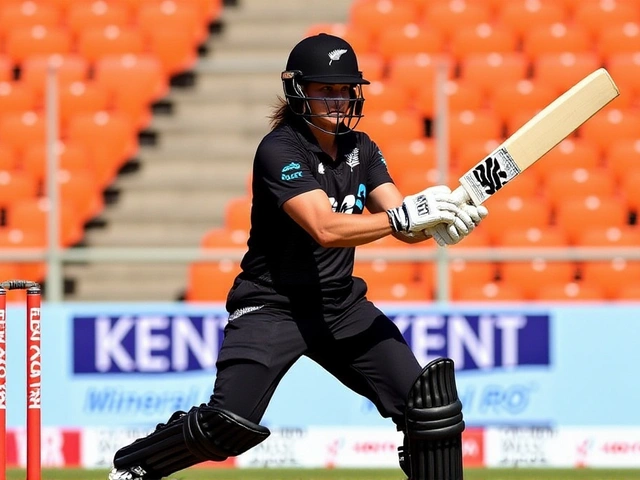When Australia Women posted 326/10 at Holkar Stadium in Indore on 1 October 2025, the result was an 89‑run rout of New Zealand Women in the ICC Women’s Cricket World Cup opener.
Match Summary and Key Performances
The toss, won by Alyssa Healy, captain and wicket‑keeper of Australia, took place at 10:15 am local time under clear skies. Healy elected to bat first, a decision that paid off in spades.
Australia’s innings unfolded in three phases. Opener Georgia Voll anchored the start with a steady 57, while Healy surged to 78 off 62 balls. The middle order, featuring Ellyse Perry (45) and Beth Mooney (62), pushed the total past 250. All‑rounder Ashleigh Gardner added a quick‑fire 41 and claimed three crucial wickets, earning her the Player of the Match award.
New Zealand’s chase began well, with openers Suzie Bates and Georgia Plimmer putting together a 72‑run stand. However, the Australian pace trio of Megan Schutt, Kim Garth and Darcie Brown broke the momentum, each taking two wickets. New Zealand were eventually bowled out for 237 in 43.2 overs, sealing the 89‑run victory.
Team Line‑ups and Tactical Decisions
Australia entered the match with a balanced XI that blended experience and youth. The top order combined the aggressive left‑handed stroke‑play of Healy with Voll’s composure. In the spin department, Alana King and Gardner provided variety, while the seam attack relied on Schutt’s swing and Garth’s accuracy. The White Ferns, captained by Sophie Devine, opted for a two‑pronged opening pair, hoping Bates’s power would offset any early movement on the pitch. Their bowling unit mixed pace from Jess Kerr and Lea Tahuhu with the off‑spin of Amelia Kerr and Eden Carson.
One tactical surprise was Australia’s decision to bring Gardner on after 30 overs – a move that paid dividends as she turned the game with both bat and ball. New Zealand’s coach, James Carmichael, later admitted the spin change might have come a little early, given the flat nature of the surface.
Historical Context of the Trans‑Tasman Rivalry
The result stretches Australia’s dominance in ODI encounters against New Zealand to 102 wins out of 135 matches, with the White Ferns managing just 31 victories and two no‑results. In the last five ODIs, Australia have won four, one being abandoned due to rain. Across all women's ODI formats, the Australians lead 107‑37, a margin that places them among the most dominant sides in international cricket. The last time New Zealand beat Australia by a comparable margin was back in the 2013 World Cup group stage, when they won by 66 runs.
Statistically, several players have left their mark. Bates tops the New Zealand scoreboard in this rivalry with 1,173 runs from 34 matches, averaging 36.65. For Australia, Perry leads with 872 runs, while Gardner’s all‑round contributions have surged in the past two years.

Reactions from Players and Officials
“We executed our plan perfectly,” Healy said in the post‑match interview. “The wickets were ours to take, and the middle order kept the momentum going.”
Gardner, visibly elated, added, “Being named Player of the Match is a bonus. It’s a team effort – the fielders saved a few crucial runs, and the bowlers kept the pressure on.”
New Zealand captain Devine remained upbeat: “We had a good start, but Australia’s depth showed why they’re the favourites. We’ll regroup and focus on the next game.”
Umpire Gayathri Venugopalan praised the quality of cricket, noting, “Both sides played a very high standard; the ball behaved nicely on the surface, giving bowlers a fair chance.”
Cricket analyst Anita Patel of the International Cricket Federation highlighted the broader picture: “Australia’s depth across batting and bowling makes them the team to beat. New Zealand’s recent T20 World Cup win shows they can adapt, but the 50‑over format demands more consistency.”
Implications for the Rest of the Tournament
With a hefty net run rate boost, Australia sit comfortably at the top of Group A. Their next clash with England will be a true test of whether the momentum can be sustained. For New Zealand, the loss drops them to third place, making the final group match against South Africa a must‑win to stay in contention. Their preparation camps in Chennai and Abu Dhabi, which focused on sub‑continental conditions, will be scrutinised as they look to rebound.
The tournament’s knockout picture is beginning to take shape. If Australia maintains their current form, a final against either India or England appears plausible, setting up a classic showdown between the world’s two most consistent women’s sides.
Background: Women’s Cricket in the Subcontinent
Indore’s Holkar Stadium, a venue that hosted several men’s ODIs during the 2023 World Cup, has become a preferred ground for women’s cricket thanks to its spacious outfield and well‑maintained pitch. The city’s cricketing infrastructure saw a $12 million upgrade in 2024, aiming to attract more international fixtures. The sub‑continent’s spin‑friendly conditions traditionally favour teams with a strong spin arsenal. Australia’s decision to play two spinners – King and Gardner – was a nod to those conditions, and the strategy largely paid off as the pitch offered turn after the 30‑over mark.
- Key Fact: Australia posted 326/10, the highest total of the tournament so far.
- New Zealand were bowled out for 237, a 89‑run margin.
- Ashleigh Gardner: 41 runs, 3/38 – Player of the Match.
- Head‑to‑head ODI record: Australia 102‑31 over New Zealand.
- Next matches: Australia vs England; New Zealand vs South Africa.

Frequently Asked Questions
How does this win affect Australia's chances in the World Cup?
The 89‑run victory propels Australia to the top of Group A with a strong net‑run‑rate cushion. It reinforces their reputation as the tournament favourites and reduces pressure in upcoming matches, allowing them to manage player workloads strategically.
What does the result mean for New Zealand's campaign?
The defeat drops the White Ferns to third in the group, making their final pool game against South Africa a knockout‑or‑else scenario. While the loss highlights gaps in their middle‑order depth, their recent T20 World Cup success suggests they can bounce back with tighter game plans.
Who were the standout performers for Australia?
Alyssa Healy’s 78 set the platform, while Ashleigh Gardner’s dual contribution of 41 runs and three wickets earned her Player of the Match. Megan Schutt’s early breakthroughs and the steady middle‑order support from Ellyse Perry and Beth Mooney were also pivotal.
What is the historical head‑to‑head record between the two teams?
Across 147 women’s ODIs, Australia lead 107‑37, with three matches ending no‑result or tied. In the specific 50‑over format, the record stands at 102 wins for Australia and 31 for New Zealand, underscoring a long‑standing dominance.
How did the pitch conditions at Holkar Stadium influence the game?
The surface was initially hard and even, favouring stroke‑play, which helped Australia reach 300+. After the 30‑over mark, the pitch offered moderate turn, allowing spinners King and Gardner to extract movement and contributing to the three‑wicket haul by Gardner.

